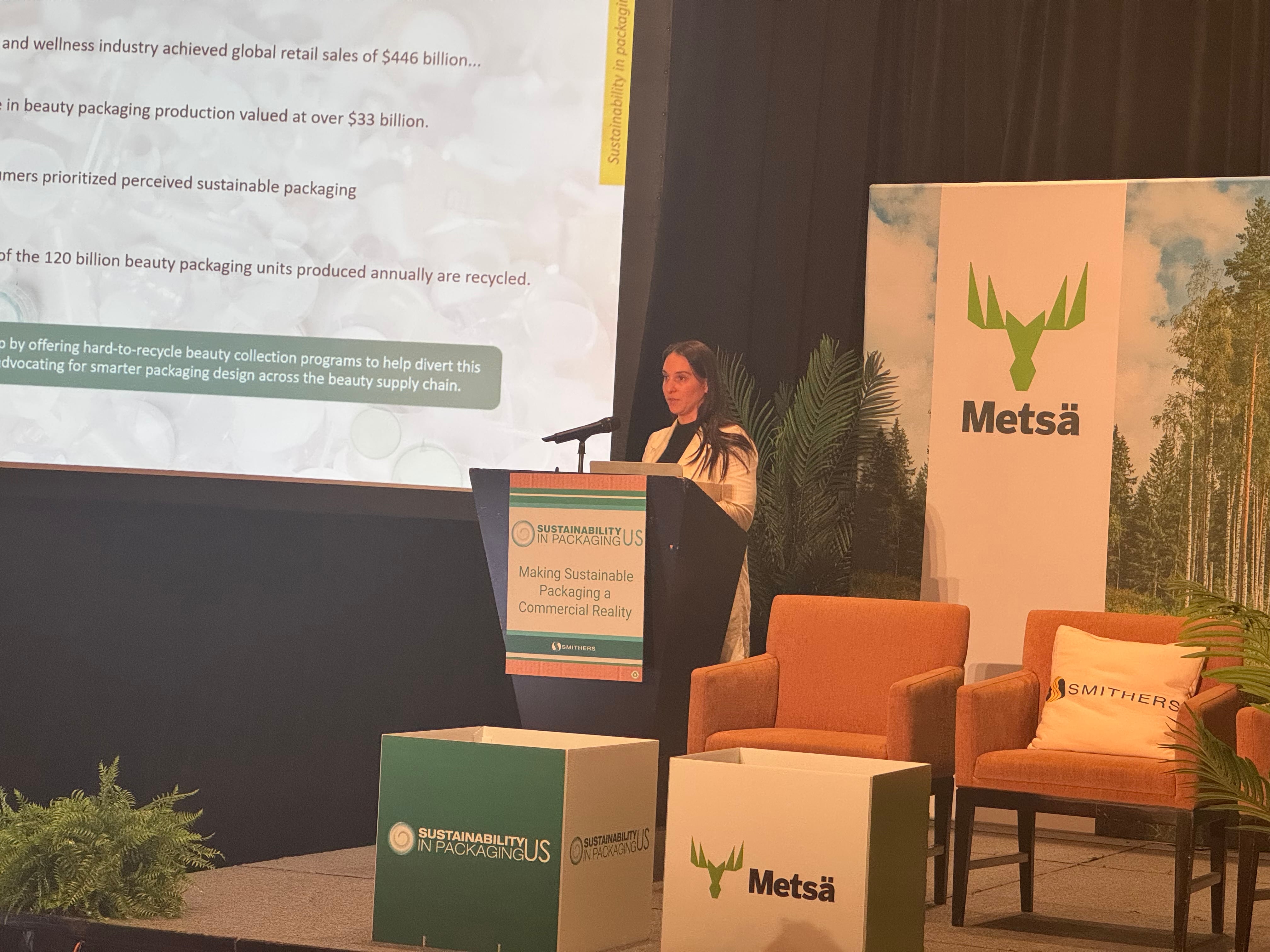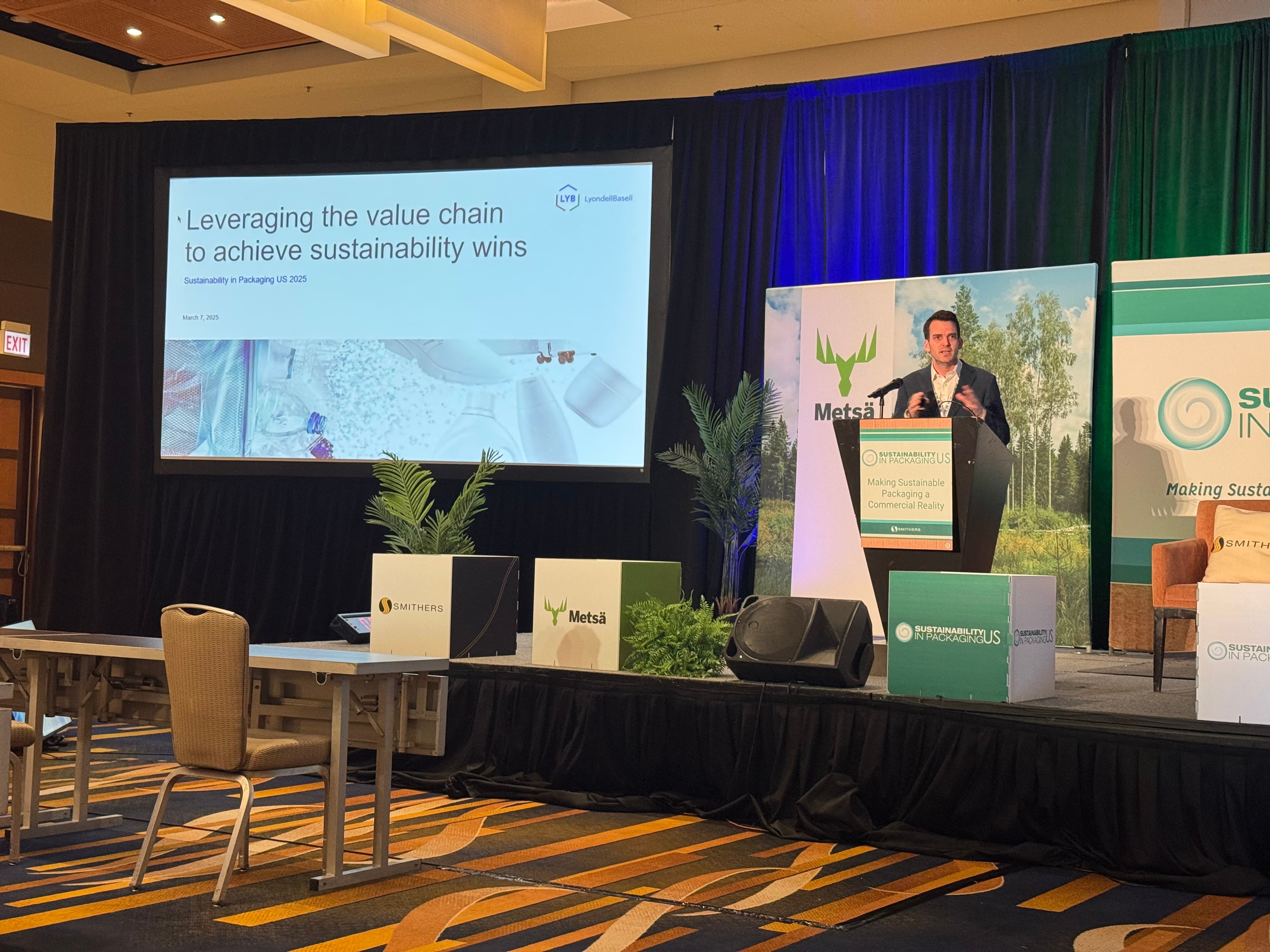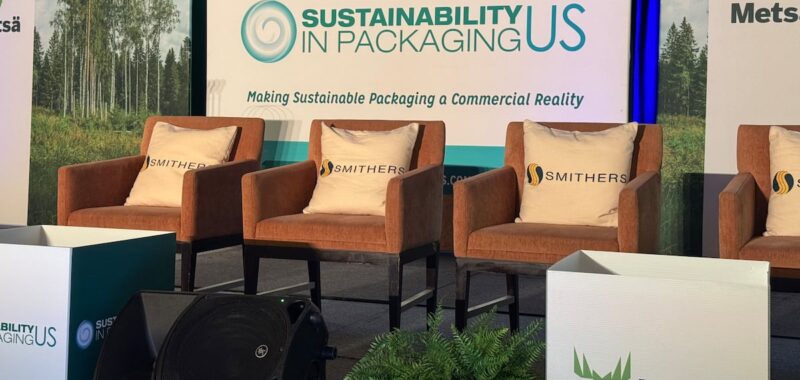This month, CosmeticsDesign attended the Sustainability in Packaging US Summit, or SUSTPACK 2025. As detailed by conference host Smithers, the focus of the conference was to provide insight into new developments, emerging market trends, and packaging innovations driving the supply chains across CPG industries like cosmetics and personal care forward toward a more circular economy.
Despite economic uncertainty, the demand for responsible end-of-life solutions for products and packaging remains high, with consumers and regulators alike pushing for action. A recent McKinsey & NielsenIQ analysis found that products making ESG-related claims grew 28% more than their non-ESG counterparts over the past five years, reinforcing that sustainability is not just a regulatory or ethical imperative—it’s a business opportunity.
Throughout the event, speakers emphasized the importance of collaboration, regulatory clarity and guidance, and clear consumer communication in driving meaningful change. From the role of EPR legislation to the need for scalable circular solutions, expert perspectives revealed that there is ample opportunity for receptive consumers to respond to shifts in more sustainable packaging practices.
Below, we highlight perspectives from key speakers who shared their takeaways on the evolving sustainability landscape.
Suzanne Shelton, Senior Partner, ERM Shelton
“Consumers, Packaging and Recyclability: Lessons Learned from the Front Lines”

“Despite turbulent and uncertain economic times ahead, 76% of people around the world still expect companies to take responsibility for the end of life of their products and packages. That, coupled with demands from growing EPR legislation, means sustainability in packaging is more important than ever.”
Philip Stanger, CEO, Olyns
“Transforming Packaging Waste: Incentivizing Consumer Recycling for a Greener Tomorrow”

My key takeaways are as follows:
- Collaboration is key – Closing the loop requires alignment between brands, retailers, and technology partners.
- Circular solutions must scale – To make real progress, we need systems that are scalable, sustainable, and user-friendly.
- Data is essential – Real-time metrics help measure both environmental impact and brand performance.
- Meet people where they are – Recycling infrastructure should fit into daily life – at the store, on campus, or in the community.
Carly Snider, Executive Director of PACT Collective, on behalf of Tara Fothergill, Brand Director
“Revolutionizing Personal Care Packaging Through Pre-Competitive Collaboration”

“Pact’s key takeaway from SustPack2025 is that innovation flourishes when stakeholders, irrespective of their industry, collaborate pre-competitively to combine resources and address our most urgent sustainability challenges together.”
Chris Schmidt, Value Proposition Strategy Manager, Circular and Low Carbon Solutions, Lyondellbasell (LYB)
“Leveraging the Value Chain to Achieve Sustainability Wins”

“Brands are struggling to communicate sustainable packaging bona fides to consumers. Despite substantial effort across the entire value chain to bring sustainable solutions at scale, multiple brand representatives mentioned the difficulty of fitting clear, effective communication around packaging sustainability into their consumer messaging.
This is driven in part by brand equity and messaging hierarchies but also by a lack of understanding of critical sustainability enablers like mass balance. The resultingly absent or muddled sustainability messaging does not sway consumers, and many brands are attributing a lack of sales bump not to the messaging, but to an inherent un-willingness to pay on the consumer’s part (despite quantifiable evidence that sustainability claims sell, such as the data presented by McKinsey and their previous analysis with NielsenIQ).
As Steve Marko from Tillamook said on the Wednesday panel, consumers want to be able to see how the purchase choice they make contributes to sustainability. If brands don’t make that clear to the consumer, they shouldn’t be surprised when the consumer doesn’t reward them for doing it.
Additionally, there is a growing recognition that regulation will be a key driver of change in the foreseeable future. Multiple speakers addressed the packaging industry’s need for clear, science-informed, and preferably standardized regulations to set a navigable and even playing field.
Several speakers referenced EPR schemes as a flywheel that could supercharge both supply and demand by spurring action at both the packaging producer and consumer levels. Unilever also referenced eco-modulation fees as potential scale tipper for the cost-benefit analysis brands conduct between standard and sustainable options.”
Filipe Vieira de Castro, Manager Recycling Intelligence, Circpack by Veolia
“A Global Perspective on Recycling: What Could Work for the US”

“This was CIRCPACK by Veolia’s first time attending a conference hosted in the United States. While we are deeply engaged with European regulations, we were keen to understand how sustainability mindsets are evolving in a market where regulation plays a much smaller role.
What stood out most was the idea that many of these shifts are considered difficult to accomplish – yet many countries with far fewer resources for waste management have found ways to make recycling (of rigid plastics) work. My presentation focused on this: Regional differences will always exist, but they should not be an excuse for inaction.
Take London, for example: 32 councils each determine their own set of acceptable and unacceptable materials, creating a mess of requirements. The wider UK faces an even bigger challenge in this regard.
Yet, despite this, progress continues full force (with high rates!). There will always be good reasons for not doing something, but the argument that there is too much differentiation in the US simply doesn’t hold up.
As we learned, low-hanging fruit, like out-of-home waste, is hardly ever recycled. The US has an incredible capacity to solve the problems it chooses to tackle, and it’s really clear that a huge number of dedicated people are working hard to improve recycling.
However, it’s easy to lose sight of the three critical factors that make recycling systems work:
- Businesses need clarity.
- Recyclers need a viable business model.
- Consumers need a straight story and an automatic way to make environment–friendly choices. (As we’ve seen from the data, consumers don’t believe they should be responsible for ensuring something gets recycled.)”

